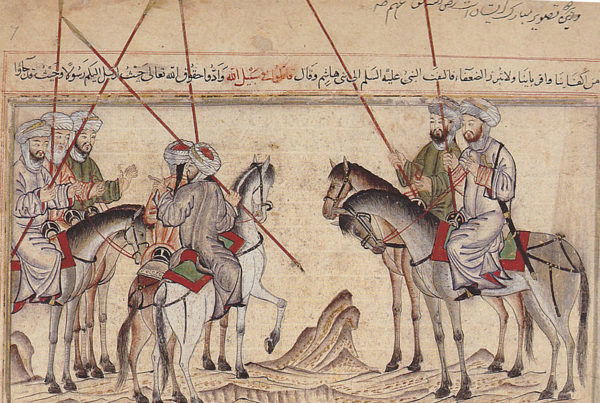 Deciding how to rate this book is very difficult. On one level the volume provides the reader with a one-stop summary of ISIS, its origins, its actions and its social media campaign. According to the author, this campaign is largely responsible for the radicalization and subsequent acts of terrorism of individuals outside of Syria and Iraq, particularly external to the Middle-East. In fact, the book’s main focus is the spread of ISIS followers and their terrorist actions in the West.
Deciding how to rate this book is very difficult. On one level the volume provides the reader with a one-stop summary of ISIS, its origins, its actions and its social media campaign. According to the author, this campaign is largely responsible for the radicalization and subsequent acts of terrorism of individuals outside of Syria and Iraq, particularly external to the Middle-East. In fact, the book’s main focus is the spread of ISIS followers and their terrorist actions in the West.
The author, an investigative reporter by profession, has done a commendable job of cataloguing the numerous incidents of on-line radicalization and the subsequent attacks in support of ISIS in North America, England and Europe at large. As a result, the publication acts as a handy source document that summarizes ISIS and its inspired terrorist activities. This is the book’s redeeming feature.
On another level the book is disappointing. Its coverage of ISIS and its terrorist inspired activities suffers from a lack of in-depth analysis. Arguably, the book is analogous to a literary version of the Jerry Springer show, focusing on the alarming and graphic savagery of the terrorist organization. Apparently this is an attempt to draw in readers who are attracted to the tragedy of others in the voyeuristic world in which we now seem to exist.
In fact, the title is a perfect example. The first component, namely ISIS Exposed, is a bit of a stretch. It portends to shed light/bring to the fore unknown and revealing information on the organization. Although the author does provide a decent summary of ISIS, there is absolutely nothing new and as noted the coverage lacks considerable depth. There is little discussion on organization; its “philosophy” or interpretation of Islam, much less on radical Islam; how the organization operates its “state”; the tactics that have allowed it to capture so much territory; or any other deeper analysis of aspects of the organization or its methodology. Rather, the book is a compilation of news clips brought together to provide a rather simple narrative.
Similarly, the second component of the title, Beheadings, Slavery, and the Hellish Reality of Radical Islam, speaks to the genre of the book, the grab for attention through gratuitous violence and horror. The author goes on about the savage behavior at length. He devotes considerable space and time, relating the threat the organization poses outside of Syria and Iraq through the actions of its disciples who were radicalized on-line and carried out attacks in the West in the name of ISIS. It is difficult not to assess a degree of fear-mongering present.
The other draw back to the book is the strong anti-Obama administration bias that is present. Whether you support the Obama administration or not, the author’s consistent scathing indictments of what he sees as the administration’s failure to adequately deal with ISIS and the threat it represents is so glaringly partisan that it detracts from the book and the author’s message and credibility.
Nonetheless, the book is fast flowing and easy to read. It is written in an almost conversational tone and comes across as a subjective extended opinion/editorial commentary. A scholarly, academic treatise it certainly is not. The book includes a comprehensive index and extensive endnotes, which are virtually entirely on-line news sources.
If you are looking for an easy to read, overview summary of ISIS, as well as its ability to extend its reach outside of Syria and Iraq and inspire terrorist attacks across the globe, you will probably find value in this book. Conversely, if you are looking for a scholarly, in-depth analysis of ISIS and its related activities you will be disappointed.








